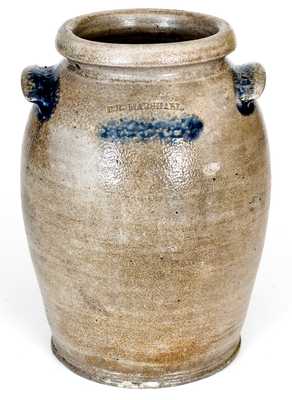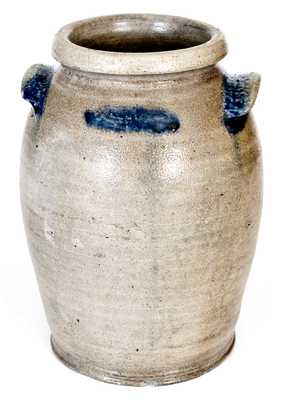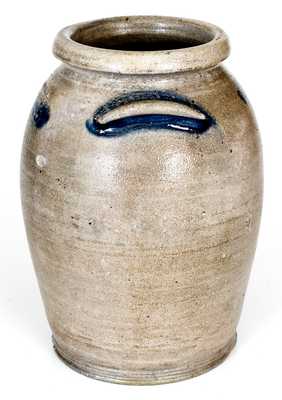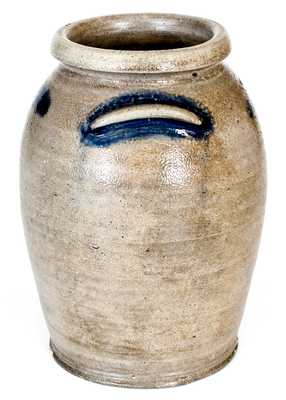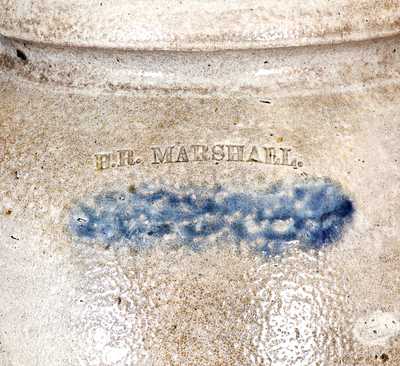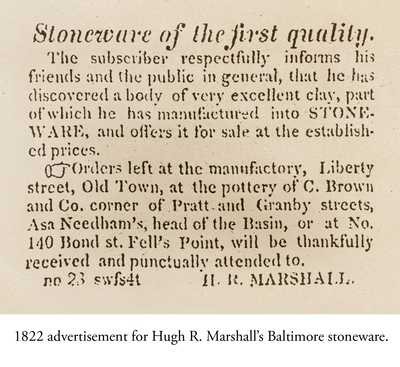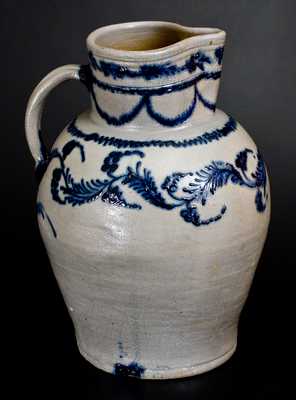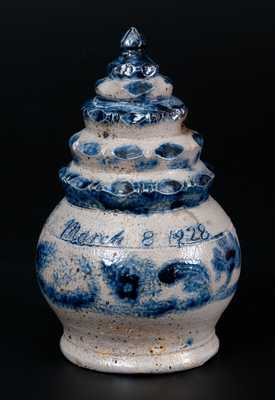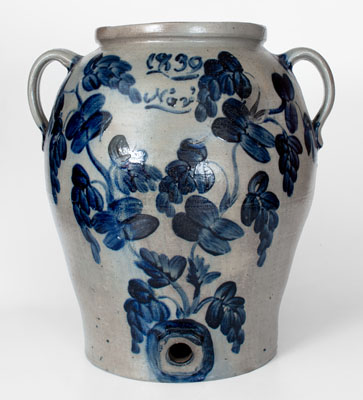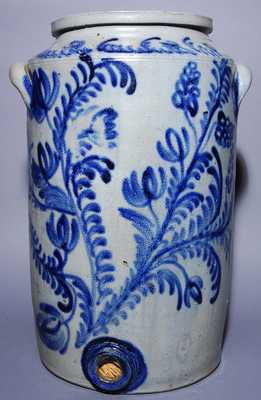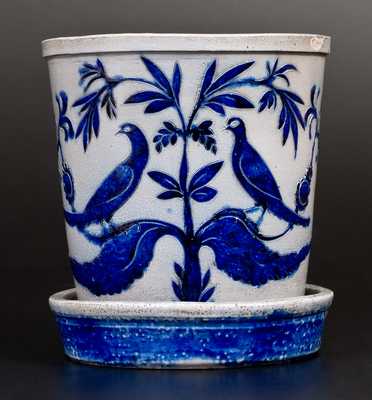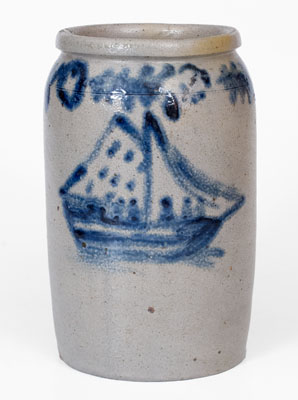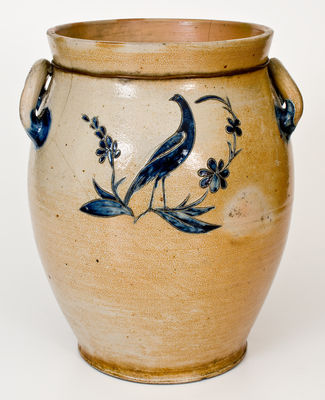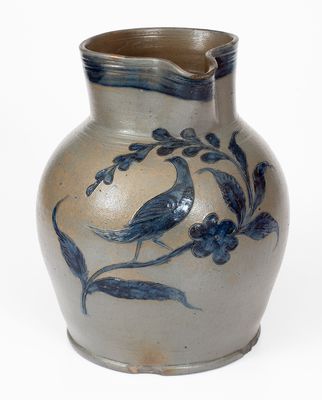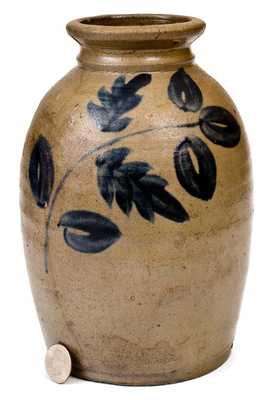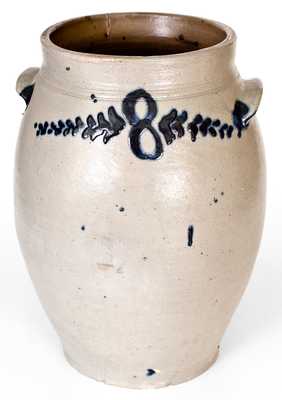Extremely Rare One-Gallon Cobalt-Decorated Stoneware Jar, Stamped "H.R. MARSHALL.," Hugh Robbins Marshall, Baltimore, MD origin, circa 1822, ovoid jar with heavily-footed base, semi-rounded rim, and applied tab handles, decorated with a brushed cobalt stripe below the maker's mark, a cobalt stripe at shoulder on reverse, and cobalt running completely around the handles. Hugh R. Marshall learned the potter's trade in Baltimore from Thomas Morgan and briefly conducted his own pottery on Liberty Street circa 1822. During this time, it is likely that Marshall was operating at the shop of William Amoss, while Amoss was in Richmond, Virginia tending to the estate of his deceased brother, the Baltimore and Richmond potter, Thomas Amoss. Marshall was later associated with Elisha Parr's pottery on Pitt Street. Among the rarest Southern or Mid-Atlantic maker's marks that we are aware of, with roughly five intact pieces bearing this stamp known. Marshall has gained notoriety in recent years with the discovery of a pottery he established in Fredericksburg, Virginia, in 1831. This site, which was also occupied by the Cornwall, NY-trained potter, Francis Hamilton Bell, yielded sherds bearing the stamp, "H.R. MARSHALL / Fred'g, Va." Additionally, later sherds excavated at the Rockbridge Baths Pottery in Rockbridge County, Virginia bearing the incised inscription, "Hugh Marshall / Factor" and "Hugh Marshall / Manufactor" indicate his involvement in a third operation. An important example of Baltimore stoneware with strong connections to Virginia stoneware schools. Provenance: Illustrated and discussed in Kille, "Distinguishing Marks and Flowering Designs: Baltimore's Utilitarian Stoneware Industry," Ceramics in America 2005, pp. 98, 103, figs. 7-10. A small surface chip to front and reverse. A 1 5/8" flake to underside. Small base chips. Surface crazing to underside, not visible on underside. A tiny chip to reverse of one handle.

